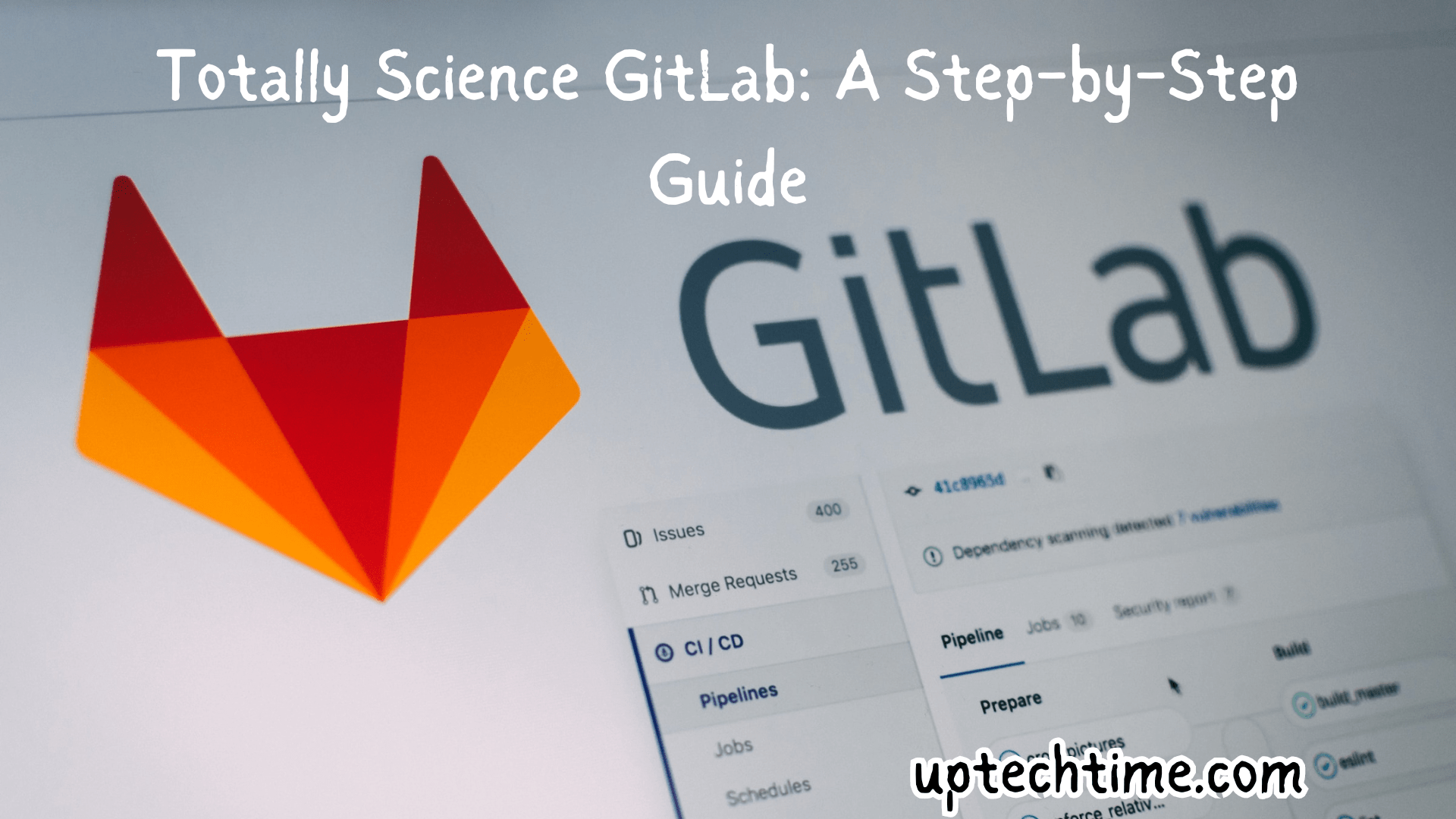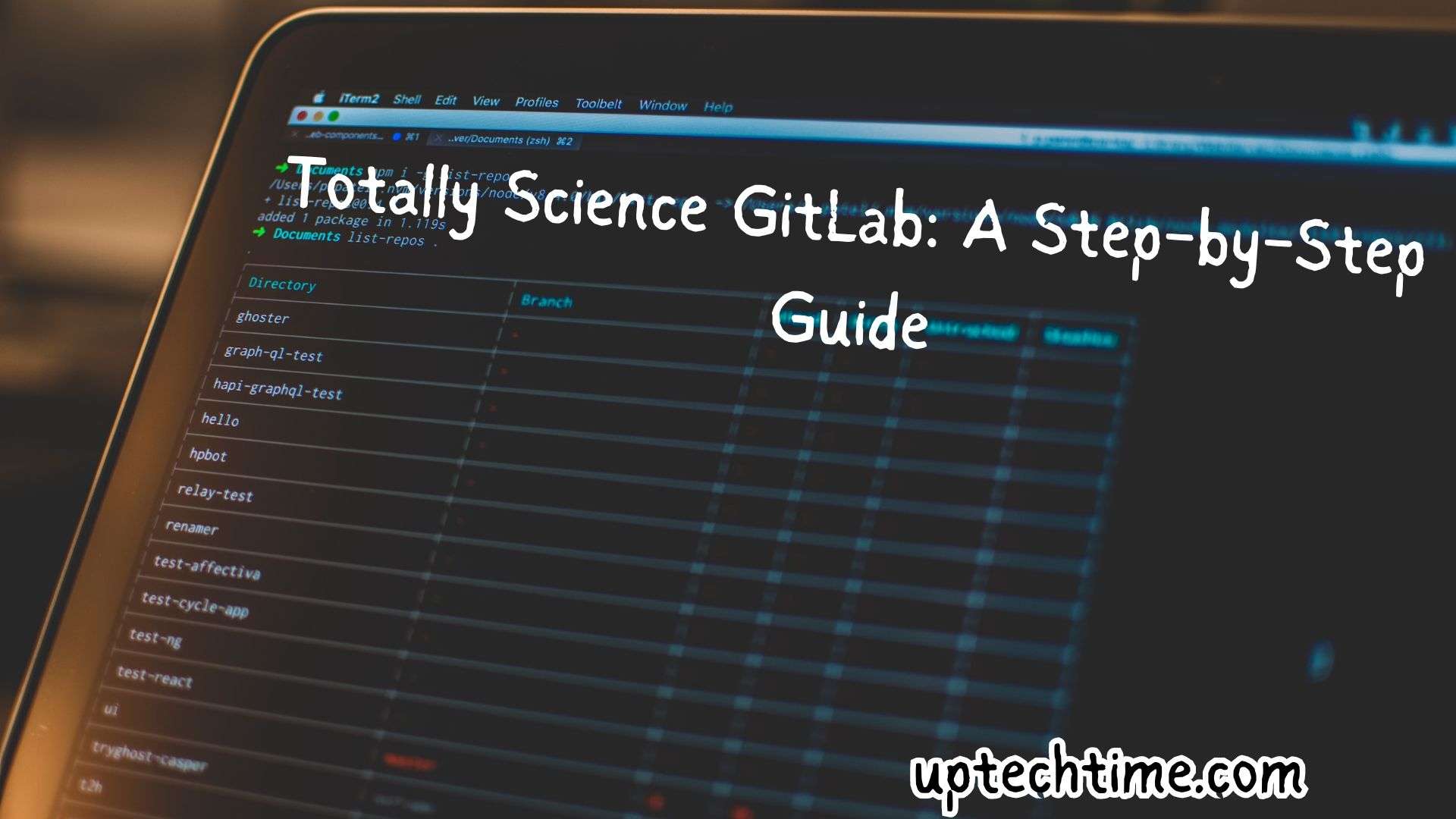Welcome to Totally Science GitLab! 🚀 Science enthusiasts and research lab workers know collaboration and efficiency are essential. And guess what? We’ve got just the tool to help you achieve both effortlessly – GitLab! In this step-by-step guide, we’ll unveil how this powerful platform can revolutionize your scientific collaborations, streamline project management, and take your productivity to new heights. So fasten your seatbelts as we embark on an exciting journey toward maximizing collaboration and efficiency with Totally Science GitLab! Let’s dive in! 💡
Introduction to Totally Science GitLab
Totally Science GitLab is a strong collaboration and project management platform for scientific research teams. Version control, issue tracking, continuous integration, and code review are all integrated into one platform to help researchers manage their projects.
Project management practices like email chains and shared folders must change as science becomes more collaborative and data-driven. Modern scientific research requires a more organized and efficient way to manage large-scale projects with several team members.
Totally Science GitLab meets scientists’ demands with a simple interface and advanced functionalities. Scientists may easily customize it to their research procedures without coding thanks to its seamless integration of software development tools.
Let’s take a closer look at some of the key features that make Totally Science GitLab an essential tool for maximizing collaboration and efficiency in scientific research:
Version Control
Version control is one of the core functionalities offered by Totally Science GitLab. This feature allows users to track changes made to files over time, making it easier to collaborate on documents and avoid confusion when working on different versions.
Researchers can instantly reverse or compare versions with version control. This saves time, ensures data analysis accuracy, and prevents errors.
What is GitLab?
GitLab, a web-based DevOps platform, centralizes code collaboration, version control, and CI/CD. Developers and teams may improve workflows, productivity, and cooperation with its products.
GitLab relies on open-source Git. It uses the same principles and workflow as Git, so version control users will be familiar with it. GitLab integrates features and technologies to assist the full software development lifecycle, not simply repository hosting.
A single source of truth for project team members is one of GitLab’s main benefits. Its central repository lets everyone see the latest code updates and participate on diverse branches without disputes or obsolete versions. This guarantees that all team members are on the same page and reduces problems from numerous code versions.
GitLab provides issue tracking, task management, boards, and milestones in addition to version control. These tools help teams plan and track progress. It also encourages team transparency by revealing duties and responsibilities.
Another standout feature of GitLab is its powerful CI/CD capabilities. With built-in pipelines and integrations with popular automation tools like Jenkins or Kubernetes, developers can automate
Why choose Science’s version of GitLab?
There are numerous version control systems available in the market, but what sets Totally Science GitLab apart from the rest? In this section, we will explore why choosing Totally Science’s version of GitLab can significantly benefit your team and enhance collaboration and efficiency.
- Integrated Features:
Science’s GitLab has many functionalities combined into one platform. You save time and effort by not having to switch tools or platforms for other tasks. Code management, problem tracking, project planning, continuous integration, and deployment are all in one location.
- User-Friendly Interface:
GitLab has a user-friendly interface that makes it easy for developers of all levels to use. With its intuitive design and navigation, even beginners can quickly start using GitLab without prior knowledge of version control systems.
- Collaboration Made Easy:
GitLab is designed for collaboration. Project teams can collaborate regardless of location or time zone. Merge requests, code reviews, and real-time feedback on team changes simplify project collaboration.
- Flexible Workflow Management:
GitLab is a versatile workflow management system that lets teams tailor their processes to their needs. Teams can swiftly implement agile approaches like Scrum or Kanban while maintaining full control over their development process.
Benefits of Using Totally Science GitLab for Collaboration
Any scientific research endeavor can benefit from Totally Science GitLab’s collaborative features. GitLab has many benefits for solo and collaborative projects, making it a crucial tool for current scientific research. Here are some of the main benefits of using Totally Science GitLab for collaboration.
- Better Teamwork: GitLab’s capacity to streamline teamwork is a major benefit. Real-time editing, version control, and merge requests allow teams to collaborate on projects without delays. This reduces email and message back-and-forth, saving time and optimizing workflows.
- Centralized Repository: GitLab stores project files and code centrally. This ensures all team members always have the latest project materials. Consistency and time savings are achieved by avoiding the need to search multiple folders or versions for specific files.
- Version Control: GitLab’s powerful version control system lets researchers trace project changes over time. This lets them compare prior versions to see how the project has changed.
- Issue Tracking: GitLab’s issue tracking system lets users create and distribute tasks.
Step-by-Step Guide to Setting Up Totally Science GitLab
The correct tools are essential for scientific research team collaboration and efficiency. Scientists like GitLab, an open-source version control, issue tracking, and continuous integration platform. We’ll walk you through setting up Totally Science GitLab for your research team in this part.
Creating an account
Start team communication and efficiency by creating a Totally Science GitLab account. This versatile tool streamlines development and boosts team efficiency. Here are the basic steps to create a Totally Science GitLab account.
Step 1: Visit Totally Science GitLab.
Visit https://totallyscience.gitlab.io/ to register for Totally Science GitLab.Click “Sign in”.
Step 2, select a login method
Science GitLab lets you sign in with Google, GitHub, or email. Choose Google or GitHub and sign in with your credentials. If you don’t have these accounts, click “Register now.” with your email address.
Step 3. Complete the Registration Form
Suppose you registered via email. In that case, a registration form will request your name, email, username, and password. Strong passwords are essential.
Step 4: Email Verification
After registering, a verification link will appear.
Creating a new project
Starting a GitLab project is the first step to improving scientific collaboration and efficiency. This section guides you through GitLab project creation.
Step 1: GitLab login
GitLab requires an account to start a project. Use your account credentials to login. If not, click “Register” on the login page to report.
Step 2: Visit Projects.
Select “Projects” from the top navigation bar after logging in. View your projects and create new ones on the Projects page.
Step 3: Select “New Project”
Click the green “New Project” button in the upper right of Projects.This opens a pop-up window with project creation choices.
- Select Project Type
GitLab supports Blank, Import, and Template projects for customizing, importing, and using pre-defined templates. Choose someone who fits your demands and name your project.
Step 5: Determine Project Visibility
Project visibility can be Private or Public. Only authorized members can see private projects.
Inviting collaborators
To maximize collaboration and efficiency on Totally Science GitLab, invite collaborators. Team members can rapidly join projects, contribute code, and collaborate with this functionality.
Follow these easy steps to invite collaborators to Totally Science GitLab projects:
- Visit the project website. Log in to Totally Science GitLab and visit the project page you want to invite colleagues to.
- Click “Settings” Click “Settings” in the top right corner of the project page. It opens the project settings menu.
- Choose “Members” Select “Members.” from the project settings sidebar. This displays the project’s current members.
- Invite new members: Click the green “Invite member” button at the upper right of the members list to invite new collaborators. In a pop-up window, enter their email and choose their access level.
- Choose access level: Totally Science GitLab offers three different access levels for collaborators – Reporter, Developer, and Maintainer. Each class has additional permissions and capabilities within a project, so it’s essential to consider carefully which level is appropriate for each collaborator based on their role in the team.
Reporter: Reporters have read-only access to a project’s repository and can view issues, milestones, and merge requests.
Developer: Developers have read-write access to a project’s repository
Using
Team collaboration and productivity can be greatly improved with Totally Science GitLab. This powerful tool simplifies project collaboration, progress tracking, and code quality. This section covers how to use Totally Science GitLab to improve collaboration and efficiency.
- Creating Projects and Repositories:
The first step to using Totally Science GitLab is creating a project and repository. A project is a container for all the related files, issues, and merge requests for a specific task or objective. Within each project, you can create multiple repositories to store your source code. This allows for better organization and more straightforward navigation within more significant projects.
- Managing Access Levels:
GitLab offers different access levels for users within a project – Owner, Maintainer, Developer, Reporter, Guest. These levels determine the actions that users can perform on the project’s repositories, such as pushing code changes or merging requests. By setting appropriate access levels for each team member based on their role in the project, you can ensure that everyone has the necessary permissions to contribute effectively without compromising security.
- Collaborating with Merge Requests:
GitLab’s merge request system, which lets team members review each other’s code before merging it into the main branch, is crucial. This helps find bugs early and guarantees only high-quality code is released. Team members can remark.









